Dana Ostrander
University of Illinois, Urbana-Champaign
Abstract
By most accounts, American painter Marsden Hartley’s fascination with the figure of the Native American was a short-lived affair, swiftly replaced by a mid-career turn toward Aryan subjects. Complicating this narrative, however, are Hartley’s late paintings like Madawaska – Acadian Light Heavy (1940), which depict bodies not immediately legible as ‘white,’ thereby alluding to the more complex history of racial mixing in New England. My proposed article argues that Hartley’s portrayal of his light-heavyweight model as an ethnically ambiguous resident of Madawaska, Maine exposes a more elusive history of intermixing between European colonizers and the Mi’kmaq and Maliseet tribes of the region – Maine’s true ‘native’ peoples. Moreover, I suggest that Hartley encoded his sitter as indigenous in order to emulate masculine stereotypes often associated with Native Americans – such as ruggedness, virility, and closeness to nature – thereby diverting suspicions about his own sexual nonconformity.
In order to signal nativeness in Madawaska, Hartley employed both textual and visual clues, such as the canvas’s blood-red backdrop and the sitter’s skin tone – which the artist described as “deep warm ivory with a rich red flush.” My research suggests that Hartley’s depiction of an exposed, muscular, indigenous body can be read as an attempt to emphasize a palpably male, and thus ostensibly heterosexual, figure. In this case, the purported sexual excesses of the ‘non-white’ Native served to naturalize the painting’s nudity, inclining viewers to displace any suspicions of sexual deviance onto the subject’s perceived racial identity rather than the artist’s own homosexuality. I ultimately propose that Marsden Hartley’s longstanding fascination with indigeneity speaks to a larger phenomenon within the Regionalist movement, whereby the descendants of European immigrants legitimized their own American nativeness by subsuming the ‘primitive,’ ‘natural,’ and ‘virile’ qualities they had once located in Native Americans.
![]()
Native/American:
Locating Indigeneity in Marsden Hartley’s Madawaska—Acadian Light-Heavy
By most accounts, Marsden Hartley’s fascination with the figure of the Native American was a short-lived affair, beginning in 1913 with a set of paintings that merged disparate tribal motifs into a Modern primitivist fantasy, and ending in 1922, with the publication of an essay series elucidating the merits of Pueblo culture.[1] Scholars writing on Hartley’s later, figural paintings from the 1930s have consequently emphasized the artist’s affection for Aryan, rather than indigenous, subjects, pointing to the Northern European types that dominate these eroticized, archaic portraits. Hartley himself telegraphed this shift in 1932, as he prepared to conclude a yearlong stay in Mexico: “The soul of the indian is dark. . . . After I have gone north and by north I mean toward Scandinavia among the golden faced people I will probably see these dark ones more clearly. For this reason I already crave to look at faces whose substance is light if not always ‘light’ in nature.”[2] The following year, firmly ensconced in Germany, Hartley seemed to recall his earlier prophecy, writing,
The blond races always represent light to me, and the others the absence of it; And I never felt this more keenly or more pleasurably I think than when I was getting on board the Orinoco last spring at the dock in Vera Cruz, [Mexico]. . . . There was such a gust of my rich native north coming out of those German faces of the crew that it seemed like I was headed toward the light again which I was.[3]
Understandably, many scholars have interpreted these passages as presenting a clean temporal break between Hartley’s early career and his late career, following his return to Maine in 1937: they consider the former aesthetically European, primitivizing, and abstract, and the latter representational, Aryan, and deeply rooted in the New England scene. Wanda Corn, for instance, has suggested that after completing the Amerika series of 1914 (Fig. 1)—in which the artist amalgamated a diverse range of tribal motifs—“Hartley never painted another series of Indian-based works.”[4]
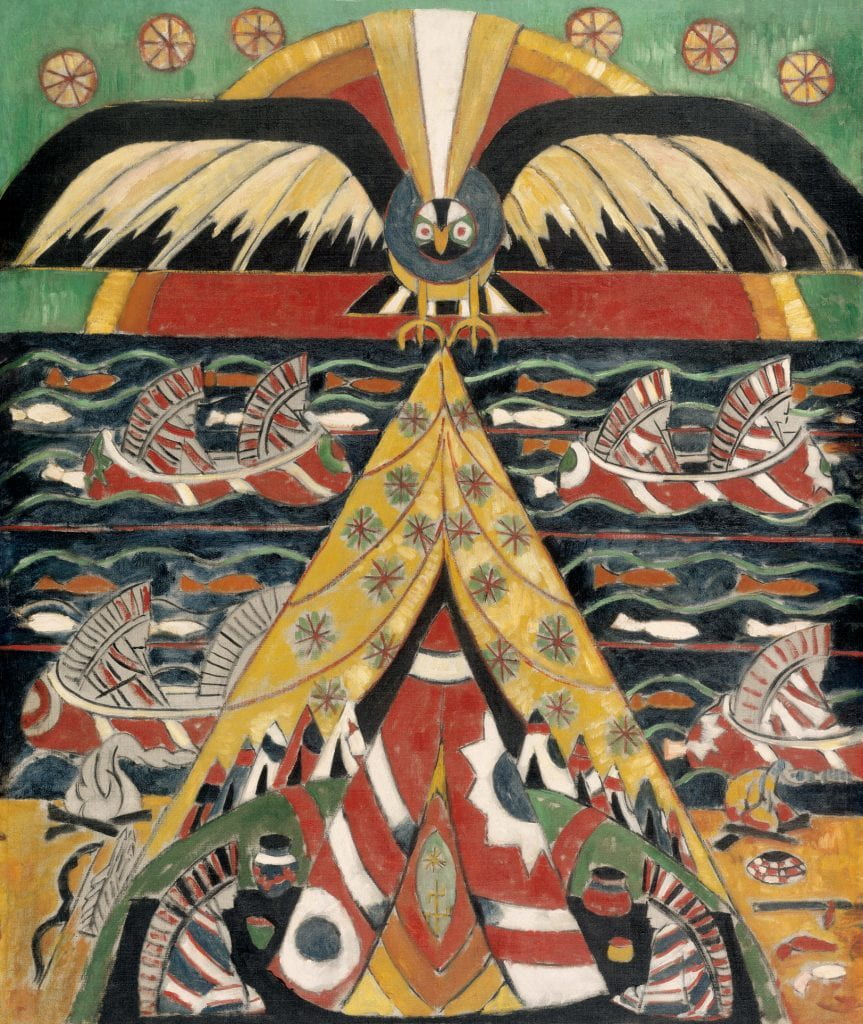
Figure 1. Marsden Hartley (American, 1877-1943), Indian Fantasy, 1914, Oil on canvas, 46 11/16 x 39 5/16 in. (118.6 x 99.9 cm), North Carolina Museum of Art, Purchased with funds from the State of North Carolina, Accession #: 75.14
In contrast, I argue that Hartley’s late paintings reflect a subtle but sustained investment in indigenous content, best exemplified by Madawaska—Acadian Light-Heavy (1940, Fig. 2).[5] In doing so, I develop an idea that Donna Cassidy presents, but leaves unexplored, in her groundbreaking essay, “ ‘On the Subject of Nativeness’: Marsden Hartley and New England Regionalism.” Cassidy tellingly suggests that Hartley “viewed . . . Maine and Acadian fisherfolk through the lens of the primitive: he transformed them into the simple, the natural, the Other.”[6] In my view, Madawaska and several contemporaneous paintings (Figs. 3, 4) signal otherness through the inclusion of bodies and skin not immediately legible as white.[7] I ultimately suggest that Hartley intended these racially ambiguous subjects to evoke qualities traditionally associated with the Native, such as masculine virility, sexual excess, closeness to the land, and authentic “Americanness.” By presenting his subjects in this way, Hartley drew upon Maine’s indigenous past and conformed to a trend in New England Regionalist circles that urged a return to “primitive,” pre-modern roots.
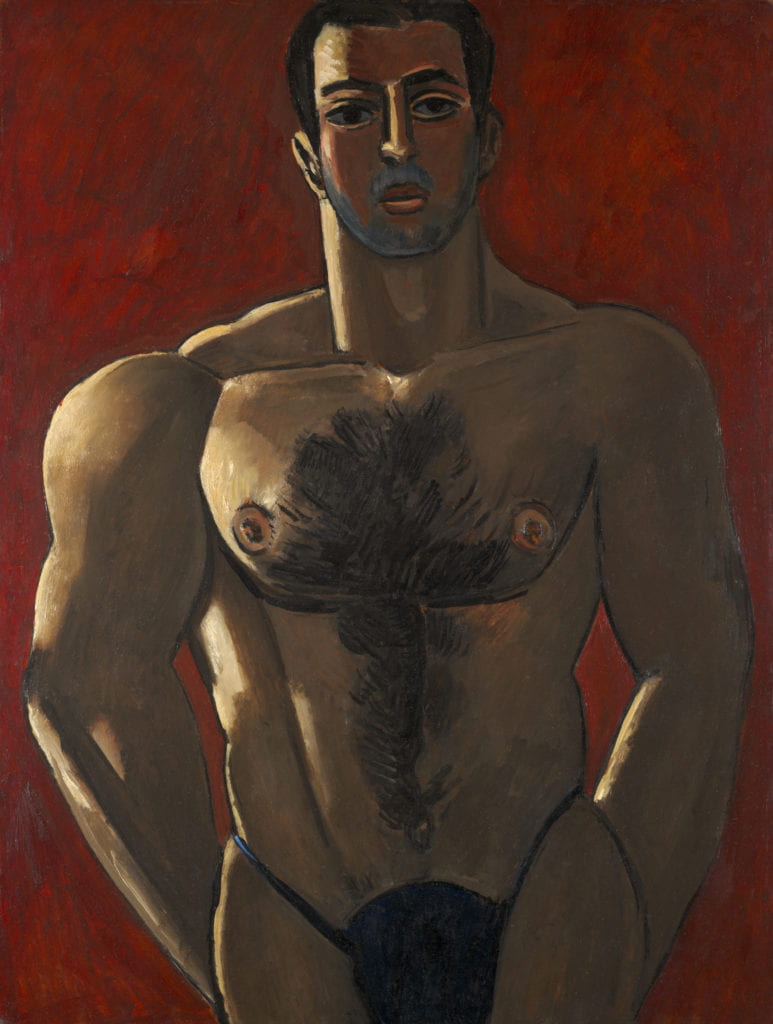
Figure 2. Marsden Hartley (American, 1877-1943), Madawaska—Acadian Light-Heavy, 1940, Oil on hardboard, 40 x 30 in. (101.6 x 76.2 cm), The Art Institute of Chicago, Bequest of A James Speyer, Accession #: 1987.249, Photo Credit: The Art Institute of Chicago / Art Resource, NY
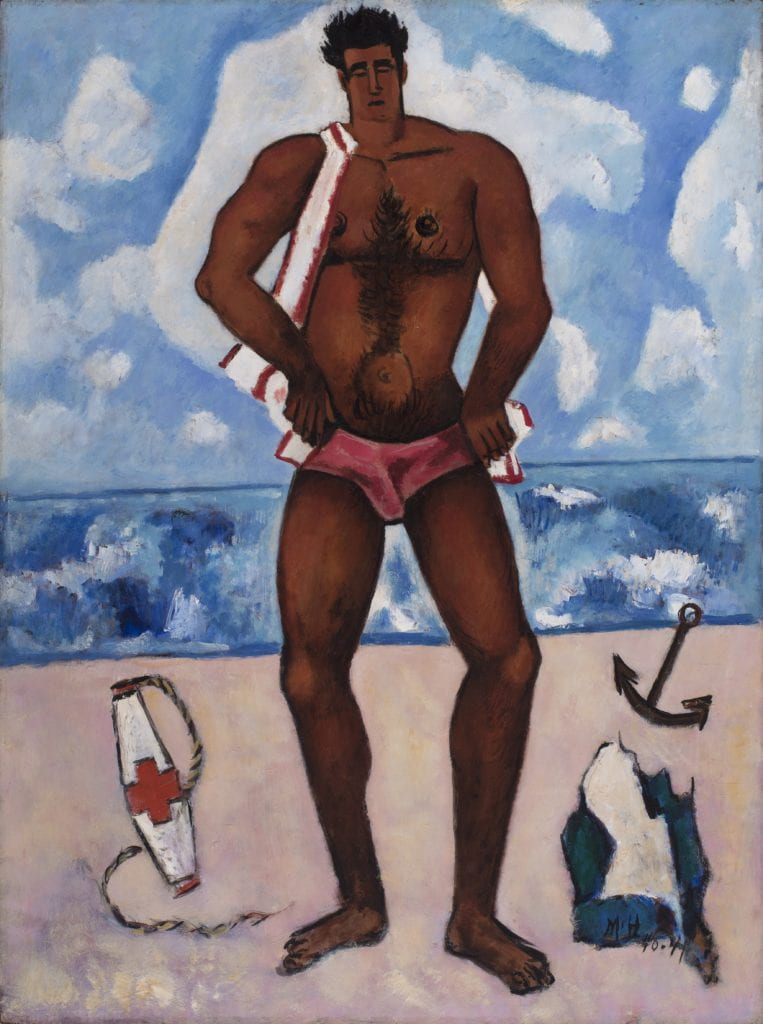
Figure 3. Marsden Hartley (American, 1877–1943), Canuck Yankee Lumberjack at Old Orchard Beach, Maine, 1940-41, Oil on fiberboard, 40 1/8 x 30 in. (101.9 x 76 cm), Hirshhorn Museum and Sculpture Garden, Gift of Joseph H. Hirshhorn, 1966, Accession #: 66.2384, Photography by Cathy Carver, Hirshhorn Museum and Sculpture Garden
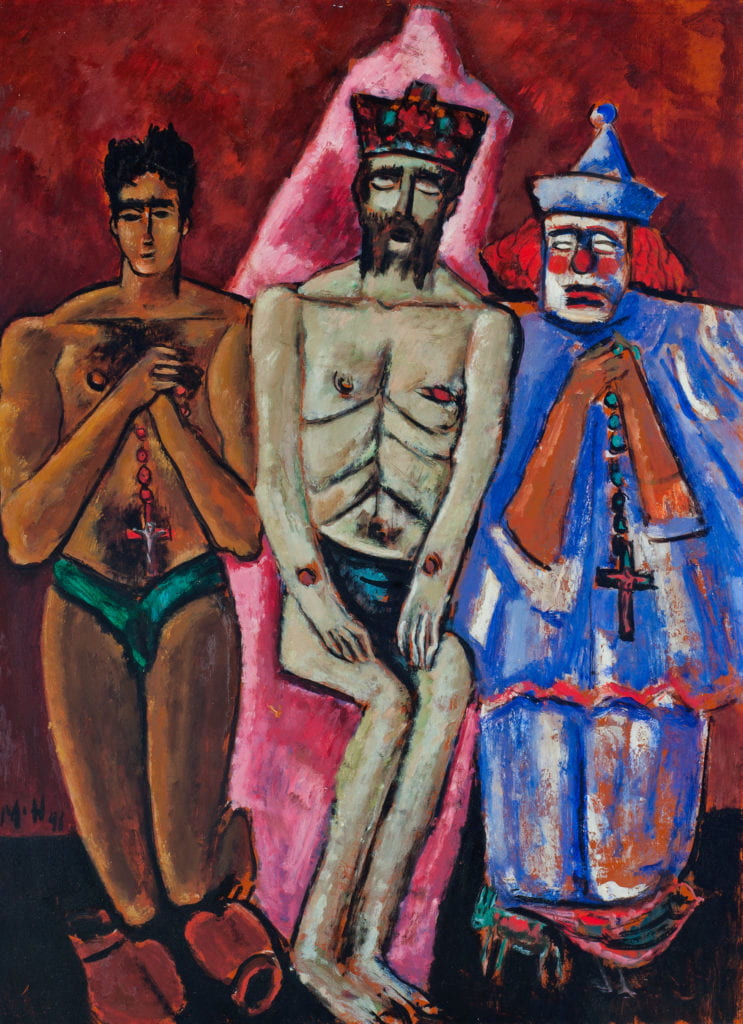
Figure 4. Marsden Hartley (American, 1877–1943), Three Friends, 1941, Oil on Masonite, 41 x 30 In. (104.1 x 76.2 cm), Eskenazi Museum of Art, Indiana University, Gift of Sarahanne Adams Hope in memory of Henry R. Hope, Accession #: 91.28, Courtesy Info: Photograph by Kevin Montague
Striking for its powerful solidity and provocative frontality, Madawaska—Acadian Light-Heavy depicts a light-heavyweight prizefighter, a young man of harmonious proportions, epic strength, and unrestrained virility. His sculptural body, unclothed and centrally placed, is distinguished from the crimson backdrop by a series of black paint strokes that outline the contours of his muscles, and by rays of raking light that illuminate his right profile, bicep, pectoral muscle, and hip. Hartley’s personal letters reveal that the sitter for this painting was a real-life pugilist in the Bangor boxing scene, “pulled up from the bowels of the YMCA” by the artist himself.[8] The young man, named Lionel Daigle, was a member of an old family hailing from the rural community of Madawaska, Maine, where his father was well-respected for raising hogs and horses, and for logging.[9] After meeting Hartley, Daigle went on to model for the artist’s classes at the Bangor Arts Society during the winter of 1940, and sat for a number of figural paintings, including three different arrangements of Madawaska.[10] Yet the painting’s lack of sitter identification and heavy physiognomic abstraction—which renders his face angular and masklike—makes it clear that Madawaska was conceived more as an idealized typology of masculinity than as a portrait of an individual. In fact, Cassidy has insightfully pointed out that the painting’s content conforms to the regional trope of the Acadian strongman, perhaps serving as a self-conscious testament to Hartley’s familiarity with the vernacular culture of his home state of Maine.[11]
Although Madawaska’s sitter may not initially register as racialized to contemporary viewers, comparing the work to Hartley’s paintings of Northern European and Anglo-Saxon men from the same period reveals its departure from the artist’s Caucasian typology and demonstrates racial encoding on both visual and textual levels. Following closely on the heels of works such as Finish-Yankee Sauna (Fig. 5) and Flaming American (Swim Champ) (Fig. 6), which were both painted in 1939 and feature blue-eyed, blond men with peachy-pink skin, Madawaska presents a figure who seems to fall well outside Hartley’s paradigm of whiteness.
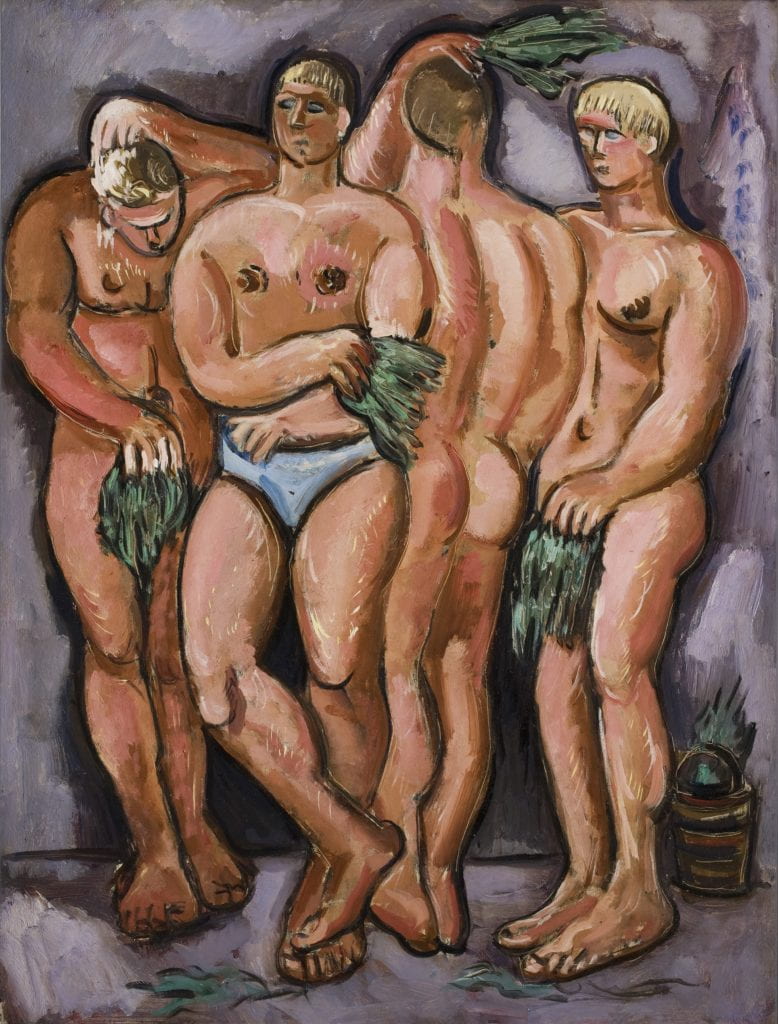
Figure 5. Marsden Hartley (American, 1877–1943), Finnish-Yankee Sauna, 1938-1939, Oil on academy board, 24 x 18 (61 x 45.7 cm), Collection of the Weisman Art Museum at the University of Minnesota, Bequest of Hudson D. Walker from the Ione and Hudson D. Walker Collection, Accession #: 1978.21.248
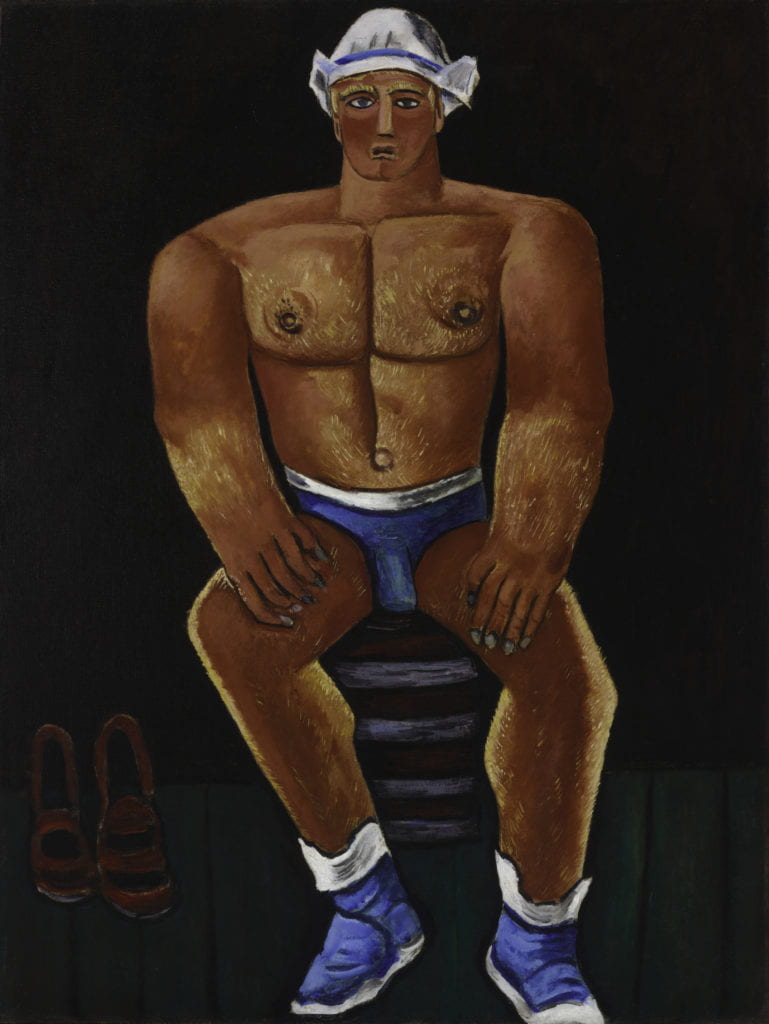
Figure 6. Marsden Hartley (American, 1877-1943), Flaming American (Swim Champ), 1939-1940, Oil on canvas, 40 3/8 x 30 3/4 In. (103.5 x 78.1 cm), The Baltimore Museum of Art, Purchase with exchange funds from the Edward Joseph Gallagher III Memorial Collection. Accession #: BMA 1990.77, Courtesy Info: Photography By Mitro Hood
While visual speculations about racial heritage are inherently flawed because of the instability of race as a material reality, I would argue that Hartley sought to delineate a noticeable difference between the bodies, complexions, and physiognomy of his Aryan subjects and their Acadian counterpart.[12] In Madawaska, the prizefighter’s eyes are painted a dull black, to match his jet-black hair, and his skin is rendered in umber tones over a red ground. Known for his eugenic sympathies, Hartley indicated on various occasions his belief in supposed racial markers such as skin tone, eye color, and physiological build. On the topic of eyes, he wrote, “I can never tell myself what there is in dark eyes. I know there is imagination fancy faith and mysticism in all the degrees of blue ones—and generally a love of birth.”[13] His decision to feature a model with dark eyes, then, places the sitter in a realm of apprehension and ambiguity. Originally painted fully nude, the fighter was also more anatomically exposed than his counterparts—at least until Hartley added a posing strap to the composition in a moment of apparent self-censure.[14] Interestingly, the prizefighter carries no accessories that would explain his nearly full-frontal exposure; no boxing paraphernalia finds its way into the frame, but the sitter’s bronzed skin and barely-there garment—which almost suggests a stereotypically indigenous loincloth—ultimately function as shorthand for an animalistic, “primitive” quality that viewers of the 1940s would have seen as compatible with sensuous nudity.
There are several reasons to believe that Hartley may have used artistic license to depict his Acadian sitter as indigenous. First, his erotic portrayal of a racially ambiguous subject demonstrates surprising parallels with French colonial illustrations of New England’s original Native inhabitants. We see this most clearly in an engraved print dating to 1797 (Fig. 7), which, like the title of Hartley’s painting, identifies its subject as Acadian. Historically, “Acadia” was the name France gave to its colonies in northeastern North America—a region which comprised parts of modern-day Maine and Nova Scotia, and included the town of Madawaska, where Hartley’s sitter would eventually be born and raised. During the colonial era, the appellation “Acadian” commonly referred to anyone residing in the region, whether Euro-American or indigenous. The engraving attests to this fact, as it identifies a member of one of the five tribes that occupied the region as Acadian. Part of a series tracing variations in regional dress across the globe, this is one of the only plates to depict nudity—perhaps a result of stereotypes about the nakedness and sexual excess of North America’s “savage” peoples.[15] The “Acadian” figure’s exaggerated musculature, exposed skin, and brute physical power—intimated in the image’s allusions to hunting—closely mirror the features of Hartley’s own Acadian boxer.[16]
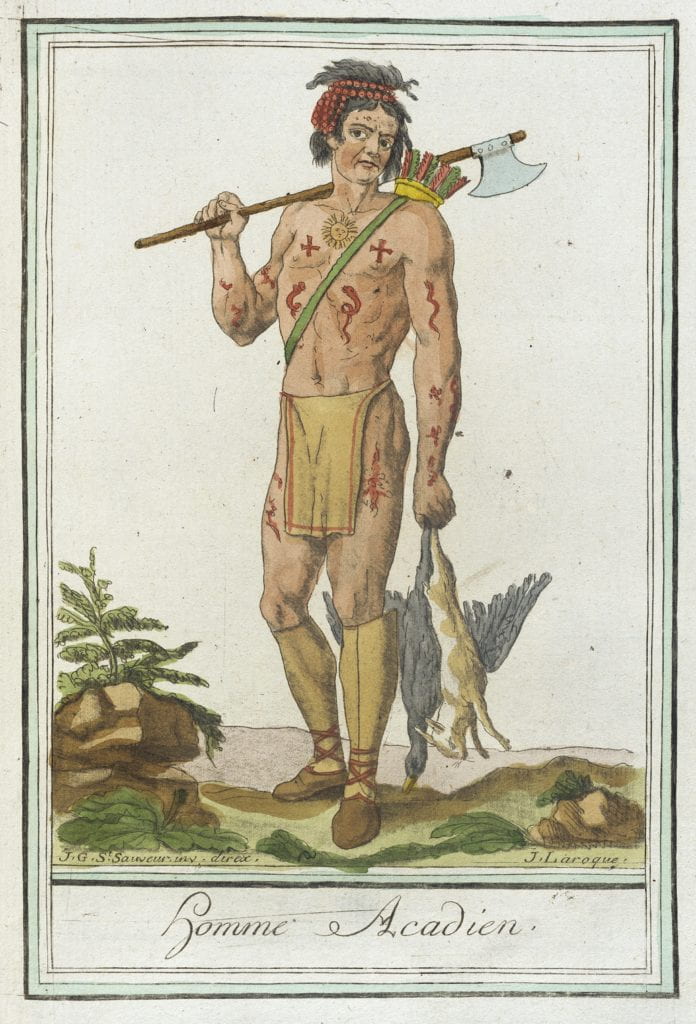
Figure 7. Jacques Grasset de Saint-Sauveur (France, 1757-1810) & Labrousse (France, Bordeaux, active late 18th century), ‘Homme Acadien,’ from the series Costumes de Différents Pays, 1797, Hand-tinted engraving on paper, 10 3/8 x 8 In. (26.35 x 20.32 cm), Los Angeles County Museum of Art, Costume Council Fund. Accession No.: M.83.190.378
In spite of such resonances, most scholars of Hartley’s work have upheld the idea that his late paintings, including Madawaska, categorically depict Caucasian subjects; some have speculated that the presence of darker complexions reflects the impact of sun tanning on fair skin.[17] This baseline assumption of whiteness can be countered in multiple ways. An example from Hartley’s writings shows that although he did occasionally conflate suntanned skin with racial otherness, his fantasies of Nativeness dissolved upon witnessing areas of white skin left unexposed to the sun. In one essay, he describes chancing upon a naked, “champagne blonde” Bavarian peasant sunning himself, “brown as a guerrero indian where the sun had burned his creamy flesh, and where the sun has not penetrated, the colour . . . almost girlishly fair.”[18] Despite Madawaska’s prominent nudity, it is impossible to find any areas where the sun did not penetrate. Moreover, Hartley’s description indicates his adherence to complexion-based designations of race, and reveals his understanding of the suntan as a transformative feature with the potential to convert a Germanic subject into a member of the indigenous tribes of Mexico—and in doing so, to confer masculinity in lieu of girlishness. Elsewhere in Hartley’s private writings, the artist consistently characterizes French-Canadians—an ethnic category that encompasses the Acadian light-heavyweight—as dark in complexion. While boarding with a local family in East Point Island, Nova Scotia, during the fall of 1935, Hartley praised the maritime clan’s appearance: “Mrs. Mason is Germanic with an accent, & Mr. is without question Canadian French, so dark and rugged he is & the boys also. All of them look like cinnamon bears, & are terrifyingly powerful, & so quiet and childlike.”[19]
Five years later, when rhapsodizing about his newly discovered model, Lionel Daigle, Hartley again observed difference at the level of complexion, calling him “tall with a powerful build and that amazingly rich color like the Provençales—deep warm ivory with a rich red flush on it and blue black hair.”[20] As it turns out, these descriptors are uncannily similar to those Hartley applied to the Pueblo people following his visit to Taos, New Mexico, in 1918. When the Pueblo dances were at risk of being banned for their perceived lasciviousness in 1920, Hartley wrote articles in their defense, valorizing the performers’ “dark warm bodies, and their jet-blue hair.”[21] His subsequent poem, “The Festival of the Corn,” makes specific note of the dancers’ “red young bodies flushing with an old flame of the sunset.”[22] Elsewhere he declares that “the red of the west is coming up out of their loins,” which are “naked but for the breech cloth.”[23] The parallels to Madawaska are numerous, from the celebration of nudity to the thematic importance of the skin’s “red flush.” The bold crimson backdrop of Madawaska begins to take on new connotations—perhaps referring to stereotypes of the purportedly “red-skinned” Native American, or even the blood running through the sitter’s veins—effectively connecting the subject to indigenous ancestors of the distant past.
One final piece of evidence supports the suggestion that Hartley sought to link his ethnically ambiguous model with a “primitive” past: the artist’s apparent reliance on Pablo Picasso’s African period to inform the aesthetic of Madawaska. In my view, the painting’s deep red and brown coloration, masklike abstraction, and geometric forms likely derive from Picasso’s 1908 painting Bust of a Man (Fig. 8).[24] Comparing the two figures’ thick eyelids, dull black eyes, and long, highlighted noses reveals undeniable similarities. Furthermore, Hartley’s completion of Madawaska in the winter of 1940 neatly coincides with the Museum of Modern Art’s retrospective, Picasso: Forty Years of His Art. Bust of a Man appears both in the extant checklist and the accompanying exhibition catalogue, making it likely that Hartley encountered it in some form.[25] Those familiar with Hartley’s early career will recall that in the 1910s he came to view Native American material culture as a precedent for modern American art, in the same way that African art had appealed to avant-garde Europeans. Strongly influenced by the primitivizing Blaue Reiter Almanac, he visited the Ethnographic Museum of the Trocadéro in Paris and spent time studying some of the 30,000 Native American artifacts in Berlin’s Museum für Völkerkunde.[26] Like his European peers, he concluded that these objects provided “authentic” source material for his art. Hartley’s apparently renewed interest in primitivism during the late 1930s lends credence to the idea that he may have attempted to paint his sitter in the image of the “Native.” Paradoxically, however, Hartley’s late-career reliance upon European movements such as Cubism came at a time when he was, at least publicly, shunning effete foreign intellectualism in favor of American nativism.
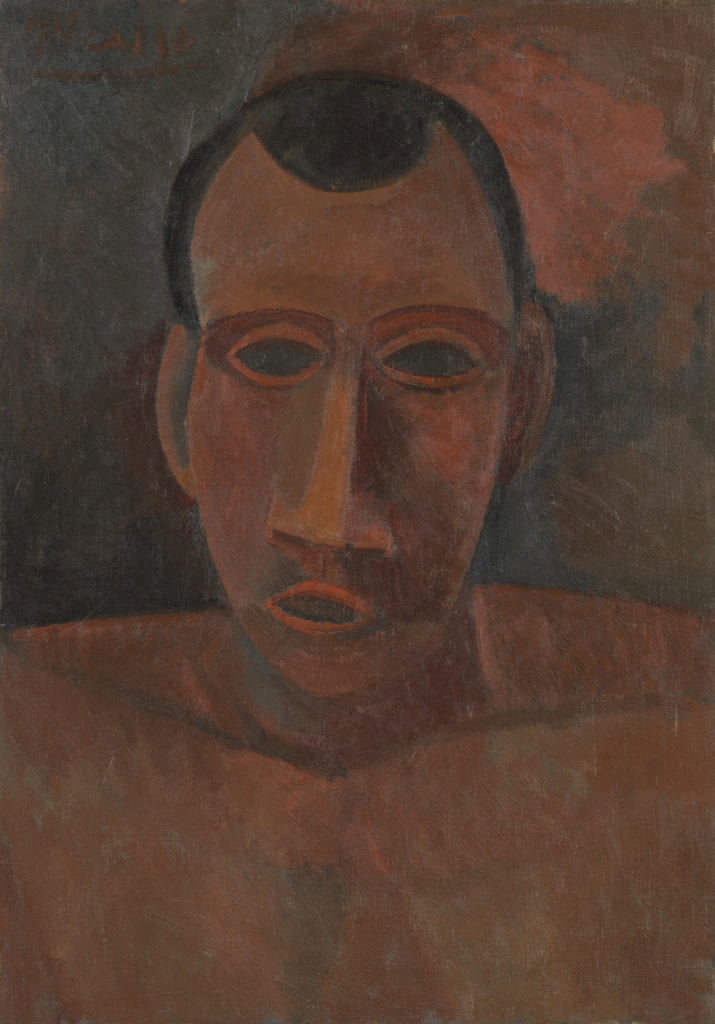
Figure 8. Pablo Picasso (Spanish, 1881-1973), Bust of a Man, 1908, oil on canvas, 24 1/2 x 17 1/8in. (62.2 x 43.5 cm), The Metropolitan Museum of Art, Bequest of Florene M. Schoenborn, 1995, New York, New York. © The Metropolitan Museum of Art.
Perhaps surprisingly, the figure of the Native cohered with the values of the 1930s art market, which embraced Regionalism as another foreign war loomed. As Hartley understood, the true “natives” of Maine were not French-Canadian or Anglo-Saxon folk, but members of the Mi’kmaq and Maliseet, Passamaquoddy, Abenaki, and Penobscot tribes. Europeans had begun colonizing the North Atlantic region at the beginning of the seventeenth century, adopting miscegenation (also known as métissage or francization) as an official assimilation policy. As early as 1603, Samuel de Champlain, founder of the first capital of Acadia, promised the Ottowan and Huron tribes that as soon as he could attract French settlers and fur traders, “our young men will marry your daughters, and we will be one people.”[27] This practice continued for over a century, ensuring that, as one of the earliest developed colonies, “Acadia saw the first and highest degree of mixture.”[28] Historians maintain that “few of the local . . . French Acadians belonging to long-established regional families would have been ‘full bloods’ by the mid-1700s.”[29] From this we can deduce that Hartley’s boxer, Lionel Daigle, was likely of mixed or Métis ancestry, since the surname “Daigle” can be traced back to one of the founding French Acadian families of the Upper St. John Valley in present-day northern Maine.[30] Settling in the ancestral hunting and fishing territory of the Maliseet people in 1785, the Daigle family lived peaceably alongside indigenous populations for generations.[31] In fact, even the Acadian town name of “Madawaska”—from which Daigle hailed, and to which Hartley would ultimately refer in the title of his painting—was originally derived in 1785 from a Mi’kmaq word that roughly translates to “the land of the porcupine.”[32]
While Lionel Daigle’s ethnic heritage ultimately remains uncertain, knowledge of the Daigle clan’s longstanding history in Maine may have provided Hartley with the impetus to import tropes of Nativeness into his painting. Born in Lewiston, Maine, Hartley was intimately aware of the state’s complicated colonial history. He was an avid reader, and particularly enjoyed literary works that highlighted interactions between Euro-Americans and Maine’s indigenous inhabitants. These included Henry Wadsworth Longfellow’s epic poem Evangeline, A Tale of Acadie (1847) and Robert P. T. Coffin’s Kennebec: Cradle of Americans (1937)—both of which referred to Maine’s lengthy history of intermarriage between French traders and Native American women. Coffin, in particular, lauded the benevolent influence of Native Americans in converting colonists from effete Europeans to strong Americans:
One of the greatest errors of history is the impression it constantly leaves of one race’s completely supplanting another. We meet it in history touching on Maine and the rest of America. The French-Indian War ends. The Indians end. As if our Maine ancestors could have lived next-door neighbors to the Abenakis for two hundred years and still have remained European. It is like expecting a book to lie open out in Maine’s sunlight and not change color. People who lived with Dawn men drank in a lot of splendor from them. . . . The Indians slowly vanished, but they left the mark of their culture on almost every moment of the colonists’ lives.[33]
In Coffin’s tale, white settlers are enriched through contact with indigenous tribes, their changing complexions symbolized by a book’s pages darkening in the sun. In addition to Coffin’s text, Hartley was also voraciously consuming Henry David Thoreau’s writings while painting Madawaska; these included The Maine Woods (1864), which emphasized the lingering presence of the Native American and referred to Maine as “the home of the moose, the bear, the caribou, the wolf, the beaver, and the Indian.”[34]
By the early twentieth century in New England, “authentic” Native Americans living outside of mainstream culture were thought to have disappeared, owing to the twin forces of intermarriage and assimilation.[35] For many, Maine’s northern landscape, climate, and folksy inhabitants even aligned the state more closely with Northern Europe.[36] Nevertheless, in the late 1930s Hartley registered an acute awareness that Maine’s populations were the product of a more diverse racial hybridization. In his unpublished essay “This Country of Maine” (c. 1937-1938), he describes the region’s “surface variation in types” as resulting from an influx of French-Canadians, Finns, Swedes, and Portuguese. Like Coffin, Hartley advocates for racial mixing, contending that “the fusion of Yankee with these various bloods produces a fine new type with viking appearances and Yankee behaviours.”[37] Hartley’s eugenic investments, which tied physiology to race and emphasized advantageous breeding, were likely also a product of the hybridization rhetoric that had circulated within the Stieglitz circle since the 1910s. Art historian Lauren Kroiz has argued that members of Stieglitz’s circle viewed Modern art as an ever-evolving product of constructive miscegenation, whereby aesthetics were “infused with new blood” derived from “primitive” sources.[38] She further contends that many Modern artists appropriated non-Western abstraction in an attempt to evoke unrepresentable concepts such as the soul, after naturalistic depictions of anatomy had failed to materialize them.[39] Using this interpretive lens, the facial abstraction of Madawaska evokes racial otherness both literally, by mirroring Picasso’s African masks, and metaphorically, by hybridizing dissonant modes of representation—realism and abstraction—in service of a new breed of modern art.
Interpreting Madawaska’s light-heavyweight boxer as a product of constructive miscegenation prompts questions about the function of indigeneity in the artist’s late-career return to his supposedly “native” Maine, and the influence of primitivism in the broader Regionalist movement. I would suggest that Hartley’s 1930s turn to tropes of Nativeness reflected anxieties about sexuality, manhood, and American identity dredged up by the specter of a second world war, while also catering to the Regionalist imperative of a return to American land. For Hartley, internalizing the mythical traits of what he called the “Redman” fulfilled the societal expectations for masculine virility, closeness to nature, and authentic Americanness that were handed down from the arbiters of the art world and from U.S. culture more broadly.
Primarily at stake in Madawaska is a strategic construction of sexuality that is both erotic and seemingly heteronormative. As the Great Depression began and Prohibition was repealed, the U.S. government began to reassert control over vice districts that had sheltered homosexual subcultures in large cities, and moral reformers tightened restrictions on sexual freedoms and visibility.[40] Championing traditional gender roles, American art critics such as Samuel Kootz eviscerated Modern painters working in the 1930s—including Hartley—for their “eunuch-like refinement,” “hopeless emasculation,” and “Puritan attitude against sensuality.”[41] He instead demanded that artists “attempt to find themselves, no matter whether their discovery shall come from the heart, brain, eyes or hips.”[42] By all accounts, this libidinal provocation prompted nothing less than an existential crisis for Hartley, whose own homosexual preferences remained inexpressible due to severe obscenity laws.[43]
Yet ten years earlier, while visiting Taos, Hartley had found a subject he believed capable of conveying homoerotic sensuousness while sustaining the guise of heteronormative masculinity. His many tributes to the Pueblo people allude to a unique culture of sexual laxity. In “The Festival of the Corn,” Hartley describes the dancers mingling: “A man, a boy, a man, a boy, a man.” The poem arrives at a climactic resolution as he writes, “The last saps of the / red-man are pouring down my thighs and arms….Red / lips are spreading trumpet-flowers-ready to catch the / corn-juice as it falls.”[44] Defending the dances against religious censorship, Hartley complained:
The worst that [Christianity] taught us was abnegation of the body . . . The redman . . . taught our pale mentality what the red understanding of the universe is . . . That nothing in art shall endure or in life for that matter, without the explicit inclusion of the body. Complete understanding includes the clear conception of the beauty of the body even in its sensuous frankness.[45]
Hartley thus dispensed with artistic prohibitions against nakedness and homoeroticism by legitimizing sensuousness as a natural bodily state that indigenous populations exemplified.
To be sure, sexuality was also inextricably tied to masculinity during Hartley’s lifetime. Victorian-era scientists had been successful in linking male effeminacy and homosexuality, and these erroneous conclusions retained social currency into the early twentieth century.[46] As the United States prepared to enter World War II, military draft boards ejected alleged “sexual deviants” from the ranks by conducting physical examinations that screened recruits for suspiciously effeminate traits.[47] When one army major wrote to a military doctor inquiring about the physiological markers of homosexuality, he received a photograph (Fig. 9) and accompanying description that highlighted the sitter’s “feminine pelvis and waistline, female distribution of pubic hair, great muscular weakness, [and] no hair on lips or chin.”[48] Worth noting is the fact that Madawaska’s pugilist displays none of these characteristics; instead he exhibits thick chest and facial hair, exaggerated musculature, and a sturdy build.
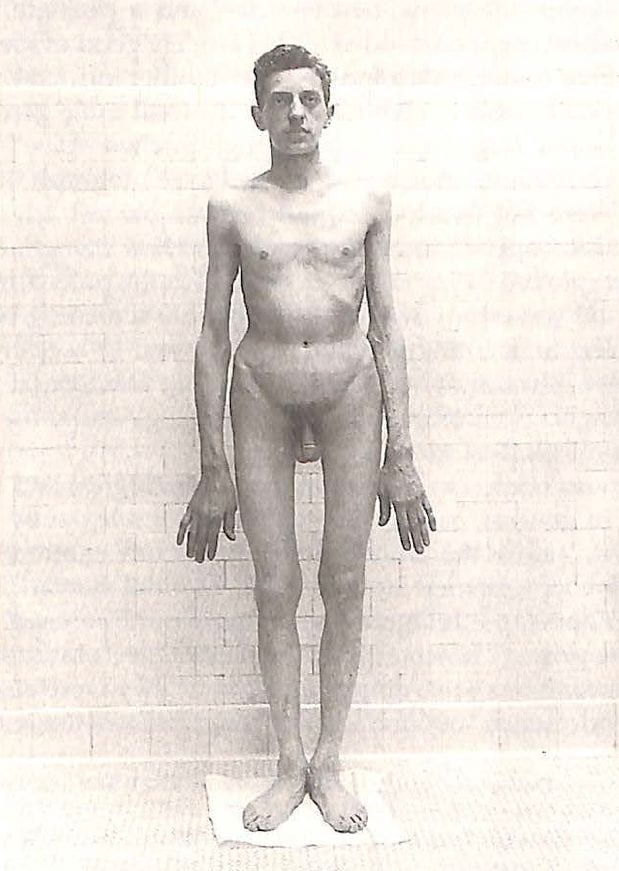
Figure 9. Unknown, “Feminine pelvis and waistline, female distribution of pubic hair, great muscular weakness, no hair on lips or chin,” 1917, photograph. National Archives, Washington, District of Columbia.
Given this cultural suspicion of effeminacy, boxing provided the perfect alibi for appreciating male nudity under the cover of a sport whose obvious masculinity implied the heterosexuality of its participants. Queer theorist Thomas Waugh has used the phrase “alibi of athleticism” to describe how the scrutiny and appreciation of the male body was deemed culturally appropriate in the context of certain distinctly male spheres, such as the physical fitness community.[49] In the mind of the public, the perfect male physique contained none of the pathological traits frequently associated with homosexuality, and was thus above suspicion.[50] The alibi of athleticism allowed for the mass production and circulation of palpably homoerotic images, by legitimizing semi-nude content that would otherwise be deemed obscene.[51] Hartley appears to have subscribed to one publication that would have featured such images, titled Strength & Health. A cover from its February 1938 issue, extant in his archives, exemplifies the magazine’s standard fare: positioned next to headlines about virile sexual desire and patriotic strength is a hyper-masculine, nude bodybuilder (Fig. 10).
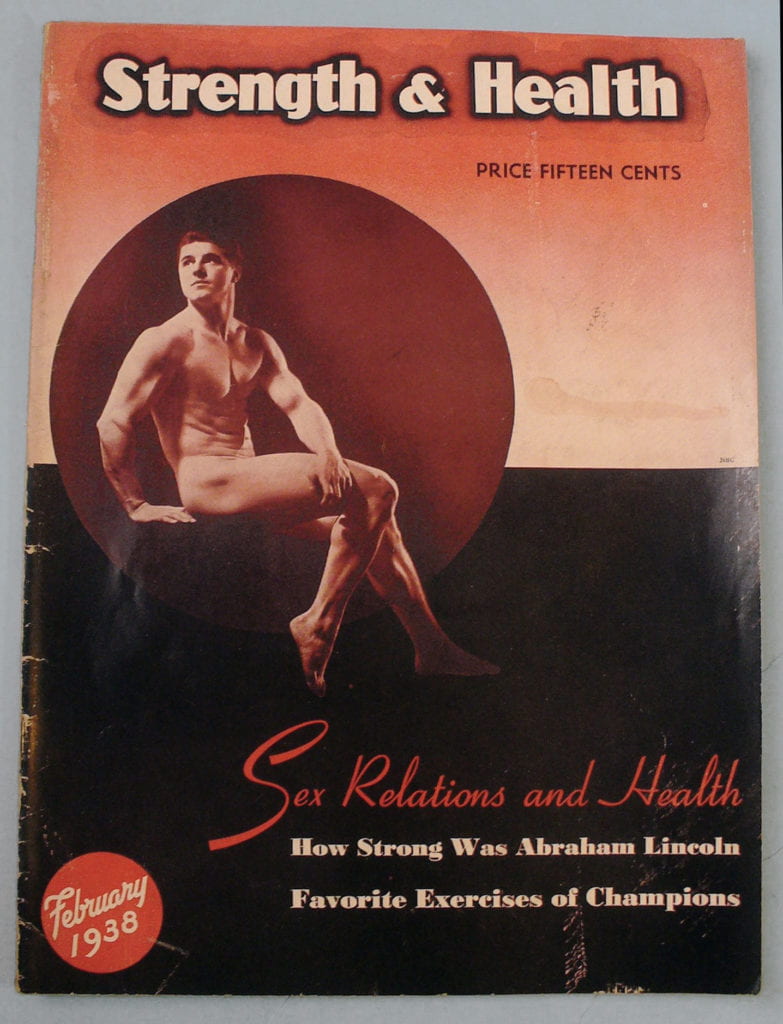
Figure 10. Unknown, Cover of Strength and Health Magazine, February 1938. Marsden Hartley Collection, Yale Collection of American Literature, Beinecke Rare Book and Manuscript Library, Yale University, New Haven, Connecticut.
In work and in life, Hartley incorporated the alibi of athleticism that he discovered in such publications. Inner-city YMCAs, such as the one in Bangor where he met the young man who would model for Madawaska, were popular cruising spots where homosexual men could encounter working-class, “straight” men under the pretense of a shared interest in physical fitness.[52] Fellow American painter Paul Cadmus had not-so-subtly alluded to this phenomenon in the 1933 painting YMCA Locker Room (Fig. 11), which depicts dozens of undressed men crowded and overlapping evocatively within the steamy confines of a YMCA basement.[53] When two versions of Madawaska went on display at the Hudson D. Walker gallery in New York in 1940, Hartley gave them athletic titles to justify their partial nudity, carefully including the fighter’s weight class and the addendum “For a Training Gym”—despite the fact that none of the canvases found its way into such a venue.[54] He would certainly have recognized the acceptability of male nudity within prizefighting pictures, already established by iconic artistic precedents such as Thomas Eakins’s Wrestlers (1899) and George Bellows’s Stag at Sharkey’s (1909). Finally, there was even a precedent for depicting non-white boxers, as in Bellows’s Both Members of this Club (1909, Fig. 12), which portrayed two fighters, one white and one black, locked in a tense struggle with the former clearly outmatched.[55]
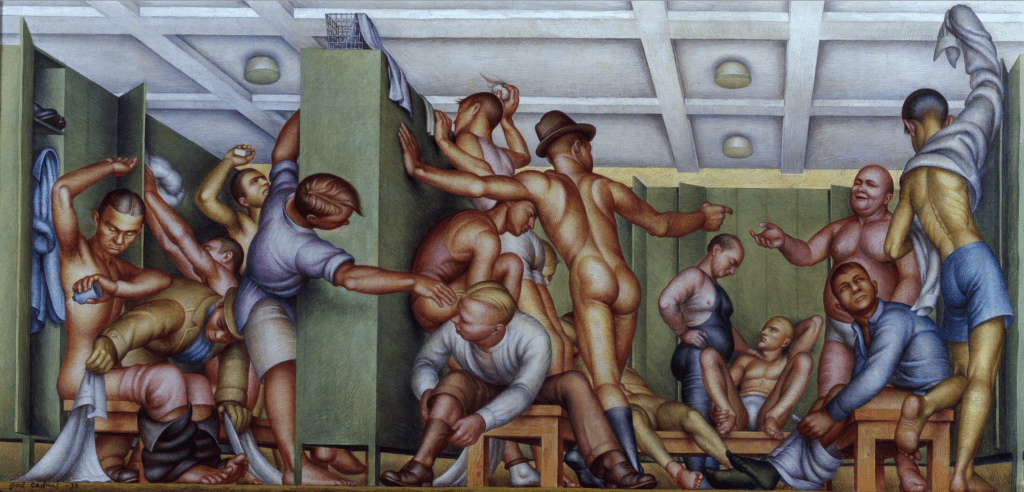
Figure 11. Paul Cadmus (American, 1904-1999), Y.M.C.A. Locker Room, 1933, oil on canvas, 19 3/8 x 39 1/4 in. (49.2 x 99.7). Private Collection. © Estate of Paul Cadmus. Courtesy of DC Moore Gallery, New York.
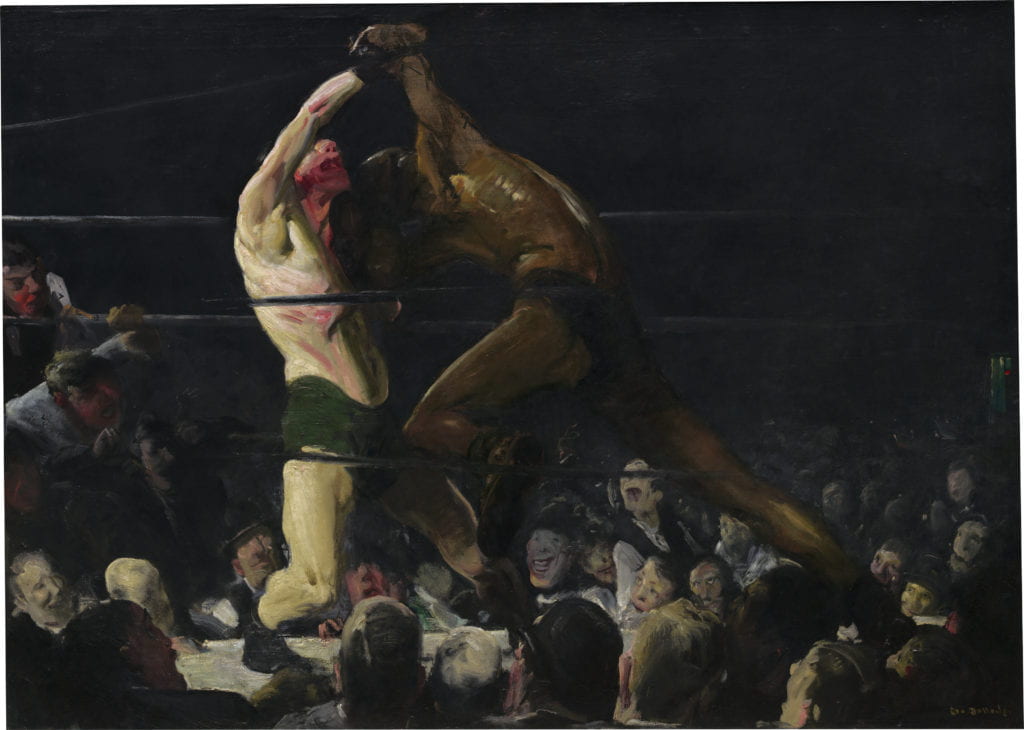
Figure 12. George Mellows (American, 1882-1925), Both Members of This Club, 1909, oil on canvas, 45 1/4 x 63 3/16 in. (115 x 160.5 cm), National Gallery of Art, Washington, District of Columbia, Chester Dale Collection 1944.13.1.
If pugilism functioned as an alibi for male nudity, it also carried a certain patriotic prestige and symbolized America’s ethnic diversity during the late 1930s, as the nation was ineluctably drawn into conflict with the Axis powers. Whereas early twentieth-century boxing matches had pitted the African-American heavyweight champion Jack Johnson against a series of “white hope” challengers intended to reinforce racial hierarchies, by 1938 racial divisions were superseded by national ones. For at least a few years, the American public was provisionally united against a common German enemy. In 1937 Joe Louis became the second black heavyweight champion in world history and was promptly tapped to fight Germany’s Max Schmeling—a battle that assumed the epic proportions of a duel between Nazi fascism and American freedom.[56] Suddenly, white Americans found themselves rooting for a black contender, taking to the streets in celebration when Louis delivered a victorious knockout punch in the first round. Hartley’s conception of a non-white boxer who symbolized patriotism and American rootedness may have taken partial inspiration from similar newsworthy events, which, in an unprecedented fashion, positioned America’s racial diversity as a source of strength and a challenge to Nazi ideals of ethnic purity.
As much as any other sector of American society, the art world was heavily invested in maintaining standards of masculine virility for artists during wartime. Espousing nationalism, xenophobia, and homophobia, prominent artists—including American Scene painter Thomas Hart Benton—lambasted effeminacy and homosexuality as unpatriotic, European, and reeking of Nazism. Artists were forced to position themselves in opposition to these traits in order to sell their work.[57] Hartley must have sensed that his career was particularly vulnerable, given his identification as a gay man and his status as a former expatriate known for working in a European Modernist style. As discussed elsewhere, he had successfully pivoted toward Native American subject matter twenty years earlier, when similar anti-German sentiment curtailed his sales in the wake of World War I. Setting off for Taos in search of a more rugged, American subject matter, Hartley opined, “We whites have had to borrow quickly because we have no tradition and no racial background . . . War has, as I have said, sent the painters and the poets home, and they have been obliged to observe native excellencies and indications.”[58] Dissuading fellow artists from turning to Europe for inspiration, he pointed them to a source allegedly untainted by civilization: “American painters must first learn to arrive at first-hand contact with [the American landscape]. It shall not come by way of effete conventional methods. . . . They have to learn the redman’s calm and the redman’s contact . . . it was their traditional ‘at-homeness’ that created their arts for them.”[59] Echoing Regionalist beliefs in the power of the land to shape character, physiology, and morality, Hartley deified the “Redman” as “the one truly indigenous . . . esthete of America.”[60] Only by drawing upon Native American sources, then, was he able to present himself as Europe’s masculine, heterosexual foil.
If indigenous culture provided a paradigm of masculinity in spite of sexual laxity, it was thought to be the direct result of Native Americans’ rootedness in the American soil. Aligning himself with trends in nativism and eugenics, Hartley argued that the land was capable of producing health, physical fitness, and masculine vitality, citing the figure of the Native as his primary example. Scholars of indigeneity maintain that this “close to nature” trope “essentializes aboriginal identity, places the ‘native mind’ in an ahistorical, timeless past of primordial unity with nature, and creates an unbridgeable gulf between ethnic groups.”[61] We see this oversimplification occur when Hartley describes the Pueblo as “at all times . . . the natural expresser of . . . the great theme of nature which occupies his mind, and body, and soul.”[62] Of course, Hartley was acting as part of a broader cultural program of primitivism that isolated the supposedly “vanishing” Native American as the sole hope for American progress in the face of modernization.[63] Critic Edgar Holger Cahill cautioned that European Modernism had transformed Americans into “Machine People” carrying ugliness to its apotheosis within the walls of a “sordid industrial Babel.”[64] He exhorted painters to follow the example of Native Americans, a people “close to the soil,” rather than concocting a “sophisticated or consciously cultivated naïveté.”[65] Physicians such as Iwan Block speculated that the “vibrations of modernity” caused conditions such as homosexuality, recommending instead a return to the pre-modern.[66] When faced with anxieties over European influence, Hartley’s antidote was the figure of the Native American, whom his acquaintance, anthropologist Edgar Hewett, had once called “a race of distinguished physical type . . . free from our infectious scourges, tuberculosis and syphilis, and the resulting physical deformities and mental degeneracies.”[67] The supposed pinnacle of good breeding, the Native American was for Hartley the American land’s magnum opus.
At a basic level, Madawaska’s mythical vision of a nude, Native body as the pinnacle of masculine fortitude can be read as an attempt to divert attention away from the artist’s own homosexuality and onto a vigorously male, and thus ostensibly heterosexual, figure. In this case, the purported sexual excesses of the non-white races served to explain and naturalize the near-nakedness of Hartley’s model. As a result, viewers of the 1940s may have been inclined to displace any suspicions of sexual deviance onto the subject’s perceived racial identity rather than the artist’s own homoerotic investments, thereby sparing Hartley from discrimination or censorship. In a broader sense, though, Hartley’s longstanding fascination with indigeneity speaks to a larger phenomenon in certain circles of New England Regionalism, whereby the descendants of European immigrants legitimized their own American nativeness by subsuming the supposedly “primitive, natural, and virile” qualities they had once located in Native Americans.
Taking into account Hartley’s professed faith in the veritable Americanness of the Native, and his subtle inclusion of indigenous cues in late works like Madawaska, it seems that Native American culture may have exerted more of an influence on the American Scene movement than previously acknowledged in art historical scholarship. Historian Robert Dorman’s thorough study of Regionalism between 1920 and 1945 supports such a notion: “In the decade or so after [World War I] and prior to the onset of depression-era politicization,” he writes, “the regionalist movement took shape and rose to the task of cultural rejuvenation, seeking inspiration from the fresh materials of indigenous America—specifically, from Native American tribal cultures.”[68]
I would contend that the success of Hartley’s late paintings such as Madawaska, and perhaps some of the successes of the Regionalist movement more broadly, depended on the imperialist propensity to appropriate qualities once associated with Native Americans and reattribute them to white “folk” populations.[69] This was especially true in areas such as Maine, where Mi’kmaq and Maliseet tribes had long been assimilated through government-sponsored intermarriage. Madawaska thus represents an experimental attempt by Hartley to adopt qualities of Nativeness, as Maine’s Euro-American colonizers had once done, in order to achieve local belonging following his expatriate voyages.
Although Hartley continued to paint Caucasian sitters during the same period, he focused specifically on ethnic groups who had immigrated to Maine in prior generations and had successfully integrated. He studiously avoided German or Bavarian subjects in favor of less controversial ethnic groups—largely French-Canadian, Anglo-Saxon, and Scandinavian—that he believed constituted a new generation of “Yankee” through their intermarriage with longstanding Maine families. Daigle effectively represented another “surface variation in type,” a flexible hybrid who simultaneously managed to appear Native, French-Canadian, and quintessentially Yankee. In painting such a figure, I believe Hartley was attempting to attain masculinity, heterosexuality, and American rootedness by association. Through his indigenous sitter, Hartley became publically linked to these purportedly regional qualities. Meanwhile, his style of presentation subtly othered Daigle, conforming to racial stereotypes about sexual excess and thus ultimately offsetting suspicions about homosexuality. In other words, Madawaska effects a kind of switch, reconfiguring the two men’s identities in a way that was more comfortable and less threatening to the artist.
By the mid-twentieth century, the word “native,” when used in a New England context, was often unconventionally deployed to indicate white rootedness and belonging. Anthropologist Arjun Appadurai has argued that, traditionally, “We have tended to use the word native for persons and groups who belong to those parts of the world that were, and are, distant from the metropolitan West. . . . When we find authenticity close to home, we are more likely to label it folk than native, the former being a term that suggests authenticity without being implicitly derogatory.”[70] It is unusual, then, that Hartley’s voluminous writings contradict this norm, ascribing “nativeness” to himself and his fellow countrymen. In the wake of European instability that made trans-Atlantic identification unappealing, Hartley and his peers came to view themselves as the rightful inheritors of America’s local, indigenous culture—the aesthetic descendants of the Pueblo, the prodigal son of Maine, a new “native” to incorporate the old. Fittingly, Hartley promoted his move back east in 1937 as the “return of the native,” anticipating a glorious reunion with what he termed “my native soil.”[71] He simultaneously praised fellow “American primitives” for creating art defined by its “simple visual pleasure” and rejection of “hocus-pocus intellectualism.”[72] Mobilizing “nativeness” as a biological characteristic resulting from one’s place of origin and breeding, Hartley sought to demonstrate his American, masculine, heterosexual, and Regionalist qualities.[73] Following his lead, art historians have tended to accept Hartley’s self-attributed nativeness without dispute, not recognizing that to do so erases Maine’s more complex history of racial intermixing and cross-cultural exchange that traces back to the colonial era.[74]
My sustained analysis of Madawaska—Acadian Light-Heavy and its sociopolitical context aims to reveal how Hartley experimented with racializing the subjects of his paintings in order to co-opt the mythic qualities of regional rootedness, masculine virility, and closeness to the earth that he had previously conferred upon Native Americans. In contrast to the standard narrative that Hartley abandoned indigenous influences in the 1920s, I propose that by the 1940s he had, in fact, subsumed them. As he himself once wrote, “It is from the redman I have verified my own personal significance.”[75]
Endnotes
[1] I wish to extend my thanks to Yale University’s Beinecke Rare Book & Manuscript Library and the Bates College Museum of Art for furnishing archival permissions; to the organizers of symposiums at the Colby College Museum of Art and the Art Institute of Chicago for allowing me to present my research publicly; and to Hartley scholars Bruce Robertson and Randall Griffey, who provided early feedback and exceptional guidance.
[2] Quoted in Donna Cassidy, Marsden Hartley: Race, Region, and Nation (Hanover: University Press of New England, 2005), 255.
[3] Quoted in Cassidy, Race, Region, and Nation, 253. Hartley also describes this occasion in his autobiography: “The last swelter at Vera Cruz—no more of the grandiosity of that kind of nature—the look of any sea a comfort really . . . and the sense of one’s own North—leaps up now to cool the eyes and the senses. Back to the Anglos and the Aryans who have light in their faces—enough of the dark face and the dark concept— the face that gets darker the longer you look. A ship in the near offing—ready for the outward, the North—northward now.” Marsden Hartley, Somehow a Past: The Autobiography of Marsden Hartley (Cambridge: MIT Press, 1998), 155.
[4] Wanda Corn, “Marsden Hartley’s Native Amerika,” in Marsden Hartley, ed. Elizabeth Mankin Kornhauser (New Haven: Yale University Press, 2003), 82. Carol Troyen has concurred, writing that Hartley “no longer felt the need to include tepees or motifs from Native American pottery in his paintings, as he had in work from the second decade of the twentieth century, to achieve the truthfulness that so-called primitive art represented to him and many other early-twentieth-century Modernists. Furthermore, to an artist who had spent most of his working life in sophisticated European art centers, Maine itself was primitive and exotic.” (Carol Troyen, “The ‘Nativeness’ of ‘Primitive Things’: Marsden Hartley’s Late Work in Context,” in Marsden Hartley, ed. Elizabeth Mankin Kornhauser (New Haven: Yale University Press, 2003), 241.)
[5] My usage of the term “Native American” is tempered by an acknowledgement of its problematic status, stemming from its tendency to gather hundreds of distinct tribal nations under one generic label. As W. Jackson Rushing writes, “’The Indian’ was an abstraction of Euro-American creation, one based loosely on facts but mostly on preexisting ideas, themes, and motifs in Western culture.” Rushing, Native American Art and The New York Avant-garde: A History of Cultural Primitivism (Austin: University of Texas Press, 1995), 1. Although I continue to employ the term “Native American” for practical purposes, I have made an attempt to designate specific tribal affiliations whenever possible.
[6] Donna Cassidy, “ ‘On the Subject of Nativeness’: Marsden Hartley and New England Regionalism,” Winterthur Portfolio 29, no. 4 (Winter 1994): 241. While I borrow from Cassidy here, my conclusions about the role of race in Hartley’s late work differ from those presented in her subsequent book, Marsden Hartley: Race, Region, and Nation. She ultimately argues that race was a spiritual rather than material or biological concept for Hartley, even in works such as Madawaska, which appear to depict non-white bodies. Although this may be an accurate representation of Hartley’s beliefs at a certain moment of his life, I would argue that Cassidy neglects to discuss how Hartley’s late work seems intentionally to materialize the outward, anatomical “signs” of race in order to evoke nostalgia for the Native Americans who once populated New England. See Cassidy, Race, Region, and Nation, 260.
[7] Examples include works by Hartley such as Canuck Yankee Lumberjack at Old Orchard Beach, Maine (1940-1941); On the Beach (1940); and Three Friends (1941).
[8] Marsden Hartley to Elizabeth Sparhawk-Jones, January 26, 1940, Marsden Hartley Collection, Yale Collection of American Literature, Beinecke Rare Book and Manuscript Library, Yale University, New Haven, Conn. (hereafter YCAL).
[9] Marsden Hartley to Elizabeth Sparhawk-Jones, January 26, 1940. I was able to discover the young man’s identity, which was previously unknown, by combing through Hartley’s letters dating from 1939 and 1940.
[10] Although my dissertation chapter examines each of the three arrangements, in this article I have chosen to discuss only the first arrangement. I do this for various reasons. First, I feel it is the most compelling and successfully executed canvas of the trio. More important, however, is the fact that it is the only arrangement that imports facial abstraction from Pablo Picasso’s primitivizing African period. The other canvases, in the collections of the Whitney Museum of American Art and the Crystal Bridges Museum, possess a greater degree of naturalism. What specifically interests me about this first arrangement are Hartley’s attempts at concealment—the cache-sexe painted over the sitter’s groin, the encoding of his face as “primitive,” and the strong racialization of the sitter’s nudity as a distraction from his homoeroticism.
[11] Cassidy, Race, Region, and Nation, 53.
[12] I should note here that the concept of Native American identity presents additional complicating factors to the already unstable idea of race. The majority of tribal nations determine membership by considering whether an individual’s shared history with the tribe warrants tribal citizenship. This model of belonging effectively undermines traditional Western notions of race, which have located identity in biological factors such as skin color or bloodline. What follows is an attempt to analyze Hartley’s physical encoding of indigeneity, problematic as it may be.
[13] Quoted in Cassidy, Race, Region, and Nation, 275.
[14] Judith Barter et al., American Modernism at the Art Institute of Chicago: From World War I to 1955 (Chicago: Art Institute of Chicago, 2009), 246.
[15] Andrea Smith, “Not an Indian Tradition: The Sexual Colonization of Native Peoples,” Hypatia 18, no. 2 (2003): 73.
[16] The subject also wears a wampum headdress and body tattoos as testaments to his “otherness.”
[17] Donna Cassidy, “The Invisibility of Race in Modernist Representation: Marsden Hartley’s North Atlantic Folk,” in Seeing High and Low: Representing Social Conflict in American Visual Culture, ed. Patricia A. Johnston (Berkeley: University of California Press, 2006), 260.
[18] Quoted in Cassidy, Race, Region, and Nation, 191.
[19] Quoted in Marsden Hartley, Ronald Paulson, and Gail R. Scott, Marsden Hartley and Nova Scotia (Halifax: Mount St. Vincent University Art Gallery, 1987), 41. Not only does this description ascribe the Masons’ “cinnamon” complexions to their ethnic heritage, but it also attaches adjectives such as “quiet and childlike,” which Hartley had frequently employed in the 1920s to valorize American Indians.
[20] Marsden Hartley to Elizabeth Sparhawk-Jones, January 26, 1940.
[21] Marsden Hartley, “Red Man Ceremonials: An American Plea for American Esthetics,” in Art and Archaeology 9, no. 1 (January 1920): 10.
[22] Marsden Hartley, “The Festival of the Corn,” Poetry 16, no. 2 (May 1920): 62.
[23] Hartley, “The Festival of the Corn,” 62, 60.
[24] The painting was, in fact, referred to as Tête Nègre at the time of the Picasso retrospective, making its racial subtext more apparent than the current title does. Alfred H. Barr Jr., Picasso: Forty Years of His Art (New York: Museum of Modern Art, 1939): 65.
[25] Barr, Picasso: Forty Years of His Art, 65; Randall Griffey, “Marsden Hartley’s Lincoln Portraits,” American Art 15, no. 2 (2001): 47. Griffey suggests that Hartley would have seen this exhibition, although he does not provide specific evidence. For context, MoMA’s Picasso retrospective ran from November 15, 1939, to January 7, 1940. Hartley’s completion of the first two Madawaska arrangements dates to late January and early February of 1940.
[26] Cassidy, Race, Region, and Nation, 172-174. Cassidy adds, “The German fascination with Native American culture at this time did not escape Hartley’s attention either. Karl May’s popular Wild West stories, the Native American art in the Blaue Reiter Almanac, and the paintings of August Macke and Max Beckmann all equated Indianness with simplicity, nature, and an untamed America and undoubtedly helped to cultivate Hartley’s own interest in Native American societies and his views of their culture as well.”
[27] Saliha Belmessous, “Assimilation and Racialism in Seventeenth and Eighteenth-Century French Colonial Policy,” The American Historical Review 110, no. 2 (2005): 327.
[28] Devrim Karahasan, “Métissage in New France: Frenchification, Mixed Marriages and Métis as Shaped by Social and Political Agents and Institutions 1508-1886” (Ph.D. diss., European University Institute, 2006), 150.
[29] Harald E.L. Prins, The Miʼkmaq: Resistance, Accommodation, and Cultural Survival (Belmont: Wadsworth Publishing Company, 1996), 67-68.
[30] “Cultural Identity: Who We Are,” Acadian Culture in Maine, University of Maine at Fort Kent, acim.umfk.maine.edu/who_we_are.html.
[31] Belmessous, “Assimilation and Racialism,” 335.
[32] Ronald Stewart, Land of the Porcupine: Growing up in Madawaska (Yarmouth: Salt Ponds Press, 2004).
[33] Robert P.T. Coffin, Kennebec: Cradle of Americans (New York: Farrar & Rinehart, 1937), 76.
[34] Quoted in Barry Stephenson, “On Being ‘Close to Nature’: Identity, Politics, Place,” Time and Mind 5, no. 1 (2012): 20.
[35] Philip Joseph Deloria, Playing Indian (New Haven: Yale University Press, 1998), 104-105. In Deloria’s words, “Now, the noble savage—still offering cultural criticism and justifying imperial conquest—could be found most comfortably residing inside American national boundaries. The absorbed Indians wearing white man’s clothes represented the ambivalent success of American imperialism. . . . If noble savage Indians now found themselves inside American society, the Indianness most desired by white Americans also reversed, moving from interior Indianness to exterior authenticity.”
[36] Cassidy, Race, Region, and Nation, 274.
[37] Marsden Hartley, “This Country of Maine,” in Cassidy, Race, Region, and Nation, 303-304. Hartley concludes this section on race by remarking that “it becomes a kind of game to settle for yourself just what the backgrounds are of all the faces one meets.”
[38] Lauren Kroiz, Creative Composites: Modernism, Race, and the Stieglitz Circle (Berkeley: University of California Press, 2012), 56.
[39] Kroiz, Creative Composites, 65.
[40] Vernon A. Rosario, Homosexuality and Science: A Guide to the Debates (Santa Barbara: ABC-CLIO, 2002), 76; Michael S. Sherry, Gay Artists in Modern American Culture: An Imagined Conspiracy (Chapel Hill: University of North Carolina Press, 2007), 20.
[41] Samuel M. Kootz, Modern American Painters (New York: Brewer & Warren, 1930), 20.
[42] Kootz, Modern American Painters, 16, 21.
[43] Randall Griffey, “Encoding the Homoerotic: Marsden Hartley’s Late Figure Paintings,” in Kornhauser, Marsden Hartley, 211. Griffey pinpoints this moment as a nadir in Hartley’s artistic development: “More than just another unfavorable review, Kootz’s cutting remarks in 1930 underscored the precarious borders of Hartley’s closet and punctuated the lowest critical point in the painter’s troubled career.”
[44] Hartley, “The Festival of the Corn,” 63.
[45] Marsden Hartley, “The Scientific Esthetic of the Redman, Part I: The Great Corn Ceremony at Santo Domingo,” Art and Archaeology 13, no. 3 (March 1922): 118.
[46] Rosario, Homosexuality and Science, 15-17. In 1886, the sexologist Richard von Krafft-Ebing coined the term “sexual invert” to describe patients who expressed an attraction to people of their own gender; he believed that men who possessed stereotypically female traits had reversed genders in the womb, which resulted in their non-normative attraction to men. Although the linking of gender and sexual desire was based on conclusions derived from an exceedingly small number of cases, the concept of “sexual inversion” remained the dominant medical model for another forty years.
[47] Griffey, “Encoding the Homoerotic,” 216-217.
[48] Quoted in Margot Canaday, The Straight State: Sexuality and Citizenship in Twentieth-Century America (Princeton: Princeton University Press, 2009), 63.
[49] Thomas Waugh, Hard to Imagine: Gay Male Eroticism in Photography and Film from Their Beginnings to Stonewall (New York: Columbia University Press, 1996), 188.
[50] Waugh, Hard to Imagine, 188-190, 200.
[51] Though homosexual pornography, which extended to depictions of full-frontal male nudity, would remain illegal until 1962, physique culture’s impetus to expose each and every well-developed muscle to the viewer provided a conceit to come as close to the depiction of sensual male nudity as possible. Waugh, Hard to Imagine, 279.
[52] John Donald Gustav-Wrathall, Take the Young Stranger by the Hand: Same-Sex Relations and the YMCA (Chicago: University of Chicago Press, 1998), 172-173. Allan Bérubé adds, “YMCA hotels in nearly every city, from Harlem to Honolulu, from Tacoma to St. Louis and Miami, were active cruising grounds throughout the war.” Bérubé, Coming Out Under Fire: The History of Gay Men and Women in World War II (Chapel Hill: University of North Carolina Press, 1990), 110.
[53] Paul Cadmus’s painting, Fleet’s In!, was infamously censored upon its debut in 1934. Intended for display in an exhibition celebrating the contributions of Civil Works Administration artists to “the cultural life of the nation,” the painting was confiscated by a retired Navy admiral before the show opened. Owing to its depiction of bawdy sailors cavorting with civilians in New York City’s Riverside Park, it was deemed a dishonest representation of the armed forces and an embarrassment to the American Navy. The censorship was widely publicized, both within and beyond the art world. As a 1937 Esquire article stated, “For every individual who might have seen the original at the [art gallery], at least one thousand saw it in black and white reproduction.” Quoted in Richard Meyer, “A Different American Scene: Paul Cadmus and the Satire of Sexuality,” Outlaw Representation: Censorship and Homosexually in American Art (New York: Oxford University Press, 2002), 39. Such a public act of censorship may have, in turn, inhibited Hartley’s willingness to exhibit full nudity or suggestively homoerotic content in a public setting, especially without an alibi.
[54] Recent Paintings of Maine: Marsden Hartley (New York: Hudson D. Walker Gallery, 1940), YCAL. Booklet published in conjunction with an exhibition, March 11-30, 1940.
[55] Bellows likely intended this painting to allude provocatively to the African-American heavyweight Jack Johnson, who had become world champion the year prior, in 1908. Marianne Doezema, George Bellows and Urban America (New Haven: Yale University Press, 1992), 104.
[56] Benita Heiskanen, The Urban Geography of Boxing: Race, Class, and Gender in the Ring (London: Routledge, 2014), 99.
[57] Sherry, Gay Artists in Modern American Culture, 24.
[58] Marsden Hartley, “America as Landscape,” El Palacio 5, no. 21 (1918): 341.
[59] Hartley, “America as Landscape,” 342.
[60] Hartley, “Red Man Ceremonials,” 7.
[61] Stephenson, “On Being ‘Close to Nature,’ ” 26.
[62] Hartley, “Red Man Ceremonials,” 9.
[63] Deloria explains that Native Americans who were considered “outside the temporal (and societal) boundaries of modernity” represented (for anti-modernists) “positive qualities—authenticity and natural purity—that might be expropriated, not for critique (as in the case of the traditional noble savage) but as the underpinning for a new, specifically modern American identity.” Deloria Playing Indian, 103.
[64] Edgar Holger Cahill, “America Has Its ‘Primitives’: Aboriginal Watercolorists of New Mexico Make a Faithful Record of their Race,” International Studio 75, no. 299 (1922): 83.
[65] Cahill, “America Has Its ‘Primitives,’ ” 83, 80.
[66] George Mosse, Nationalism and Sexuality: Middle-Class Morality and Sexual Norms in Modern Europe (Madison: University of Wisconsin Press, 1985), 136-137.
[67] Edgar L. Hewett, “America in the Evolution of Human Society,” Art and Archaeology 9, no. 1 (January 1920): 4.
[68] Robert L. Dorman, Revolt of the Provinces: The Regionalist Movement in America, 1920-1945 (Chapel Hill: University of North Carolina Press, 2003), 60. Although Hartley found the Regionalists’ pretense of untainted nativism to be false and hypocritical in its disavowal of European influence, scholars such as Donna Cassidy and Randall Griffey concur that Hartley’s 1930s return to New England and subsequent self-promotion as “The Painter of Maine” were born of his desire to market himself within popular Regionalist parameters. See Cassidy, “On the Subject of Nativeness,” 244; and Griffey, “An Ambivalent Prodigal: Marsden Hartley as ‘The Painter from Maine,’” in Marsden Hartley’s Maine, eds. Elizabeth Finch and Randall Griffey (New York: Metropolitan Museum of Art, 2017), 113.
[69] I leave it to other scholars to explore the influence of indigeneity on the broader Regionalist movement in greater depth.
[70] Arjun Appadurai, “Putting Hierarchy in Its Place,” Cultural Anthropology 3, no. 1 (1988): 36-37.
[71] Quoted in Troyen, “The ‘Nativeness’ of ‘Primitive Things,’ ” 241.
[72] Quoted in Troyen, “The ‘Nativeness’ of ‘Primitive Things,’ ” 247.
[73] The notable scholar of Native American history, Philip J. Deloria, has described this practice as “playing Indian.” In particular, he argues that Americans beset by the enfeebling anxieties of early twentieth-century modernization resolved their concerns through mimesis, whereby they “imitated and appropriated the Other viscerally through the medium of their bodies.” Deloria, Playing Indian, 120.
[74] For instance, the recent exhibition catalogue Marsden Hartley’s Maine foregrounds Hartley’s “racial and Aryan biases,” and characterizes Maine as “composed of a eugenically desirable blend of Northern European, French Canadian, and, in some instances, Portuguese bloodlines”—effectively overlooking indigenous histories in the state. Randall Griffey, “An Ambivalent Prodigal,” 130.
[75] Hartley, “The Scientific Esthetic of the Redman,” 119.
Author Bio:
Dana Ostrander is a Ph.D. Candidate in Art History at the University of Illinois, Urbana-Champaign. She is currently completing her dissertation, titled “Down to a Science: The Vestiges of Clinical Photography in American Fine Art.” This project examines the collision between American art and science at the locus of the human body during the late-nineteenth and early-twentieth centuries. Previously, Ostrander earned an M.A. in Modern and Contemporary Art History from the University of Illinois, Urbana-Champaign, and a B.A. in Art History and English from Wellesley College. Her research has been supported by grants from the California Arts Council and the University of Illinois Art History Program, as well as by a Wellesley College Horton-Hallowell Fellowship. She may be contacted at ostrndr2 at illinois.edu.
